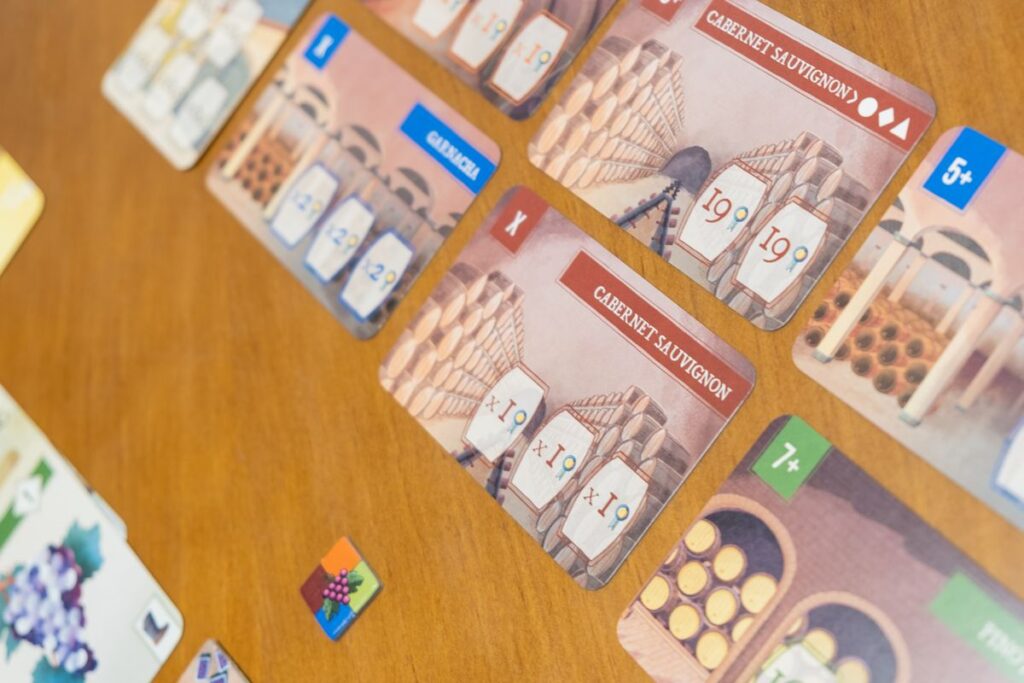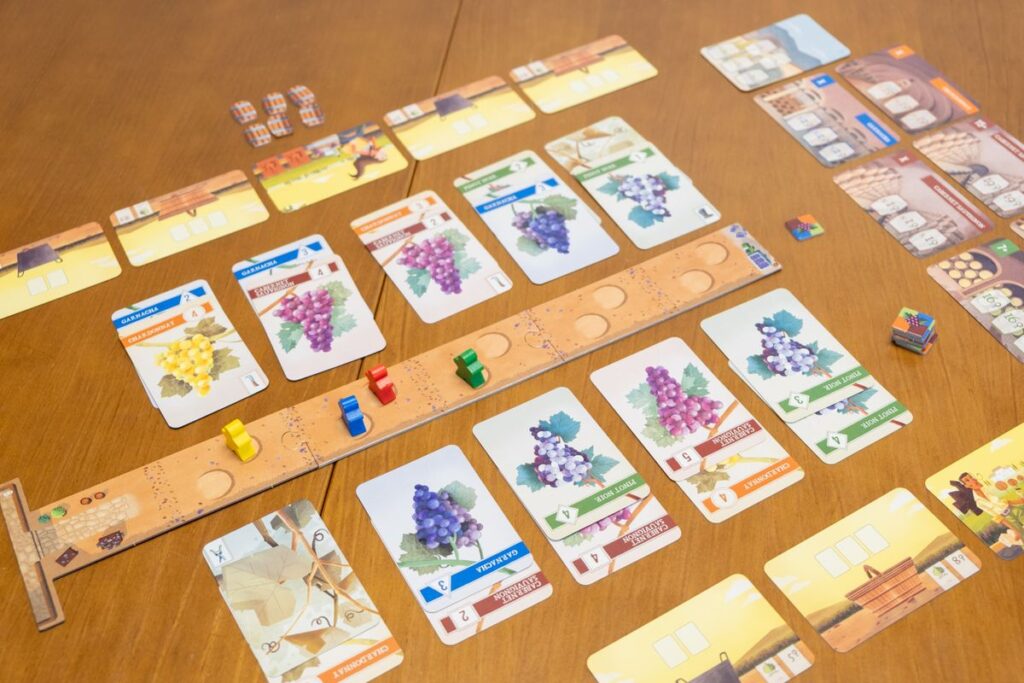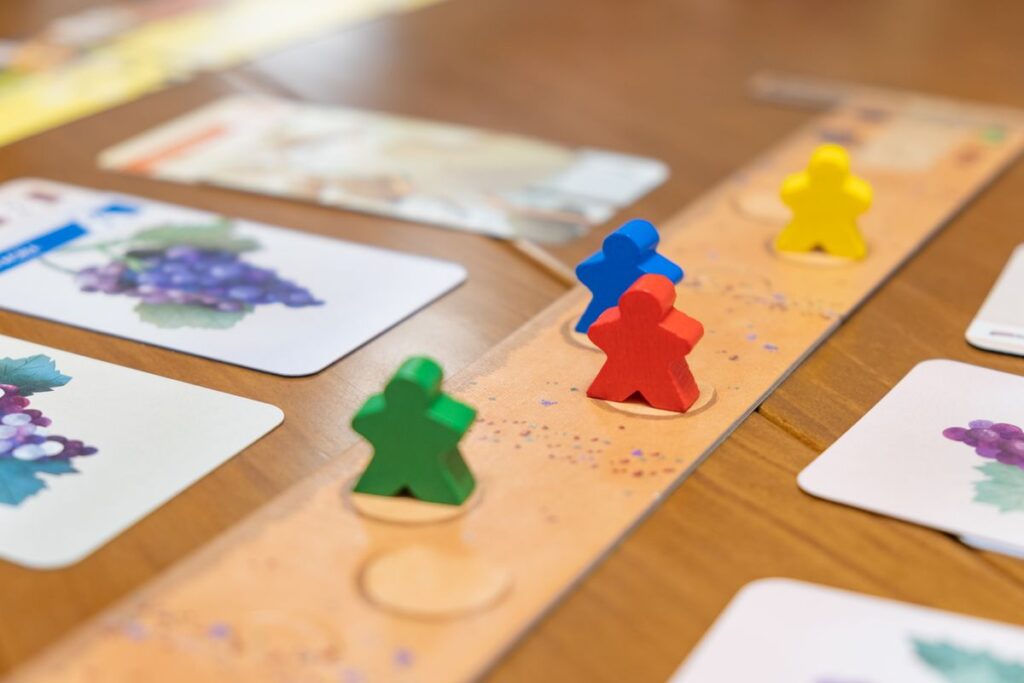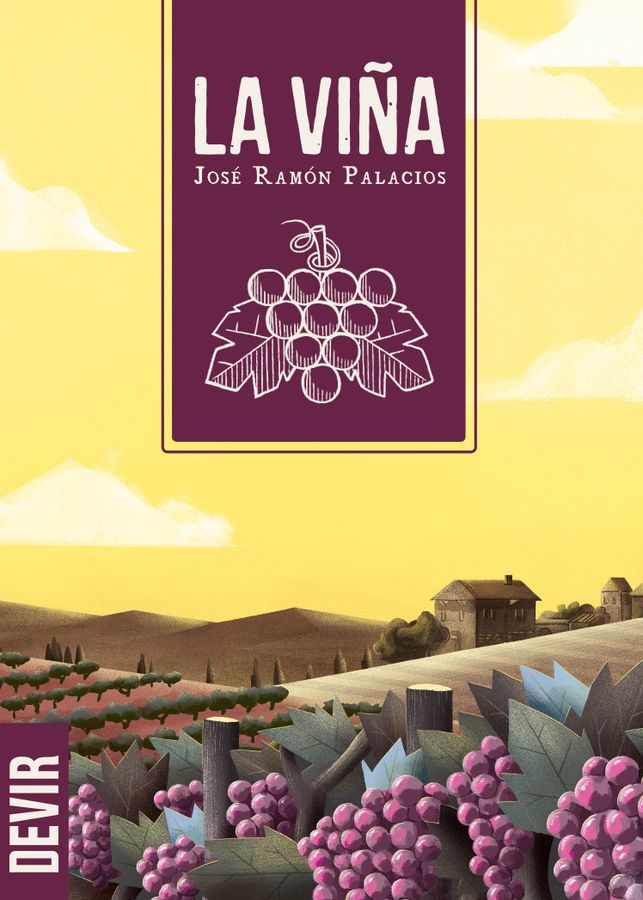Ever fancied yourself as the owner of a vineyard? You’re in luck. La Viña is a card game from Devir Games, where players compete to get the best grape yield from an abandoned vineyard, and turn it into wine. The player who does best, inherits the vineyard!
If you ask a board gamer to name a game about making wine, I can guarantee you’ll get one of two games in response: Viticulture or Vinhos. Both are brilliant games, but both are big games, and not the cheapest either. So what do you do if you want to capture that feeling of picking grapes, making wine, and selling the wine – but you don’t want to spend a fortune? That’s where La Viña comes in. It’s small enough to fit in your pocket and costs less than half the price of Viticulture. If you were so inclined, you could buy six copies of it for the same price as Vinhos Deluxe. But would you want to?
Grape Expectations
To play La Viña you’ve got to make a vineyard first. The vineyard is a long, thin board with spots to claim, and pairs of grape cards are placed on both edges. As you wander along the path, you can stop to pick grapes, taking a card from either side and adding it to your basket. Once you get to the end of the path, you can send the grapes you picked to a winery, fulfilling contract cards and making barrels of delicious dancing juice.

When you move your grape picker along, you can move them as far as you want to, whether that’s the next space along, or right to the very end of the track. There might be some pretty amazing grapes right down the bottom of the vineyard, and if you’re that desperate for them, you can just saunter your way down there and pick them. However, much like following the arrows on the floor in Ikea, once you move forwards you can never go backwards. You might sprint down to the end to grab that amazing bunch of Chardonnay grapes, and then you can deliver to that particular winery first, offloading one of your barrel markers. The rest of the players are then free to lazily stroll along in your wake, picking as many grapes as their baskets can carry.
It’s all a little bit ‘tortoise and hare’.
In Vino Veritas
The first thing I thought of when I setup La Viña for the first time, was how much it reminds me of PARKS. It’s not just because it uses that same ‘move forwards but never backwards’ mechanism as last year’s hit stroll-em-up, but also because of the whole relaxing ambiance of the game. The setting, the artwork, the rule book illustrations – it all makes me think of a lazy summer evening in a Spanish vineyard. I’ve never actually spent a lazy summer evening in a Spanish vineyard, but that’s besides the point, it’s still the feeling it imparts on me. I think that’s quite a feat, when you consider this is a small-box game with a deck of cards and a few meeples. I’ve played bigger games with much bigger budgets that haven’t conjured a theme the way La Viña does.

The gameplay is tight, and there’s some really clever design choices in La Viña. Grape cards on each side of the vineyard are laid-out in pairs, but you can only see the top part of the bottom card. The top part shows you the variety of grape and its value, but on the bottom of some cards there are some tools you can claim, which let you do things like claim cards from spaces behind your meeple, or claiming a second card when normally you’d take one. The points you earn by making barrels of wine – the same points that you need to win the game – can be traded in to upgrade your baskets to carry more grapes. The trick is in finding the tipping point where the rewards won’t outweigh the investment.
Final Thoughts
La Viña isn’t a table-filler or full-on game night game, so making direct comparisons to the likes of Viticulture and Vinhos would be pointless. What La Viña is, however, is a lovely, evocative little game. It won’t take you more than 45 minutes to play even with a full cohort of players, but it offers plenty of game in that time. I really enjoy the risk vs reward aspects of the game, and the feeling of this staggered race. You can see which wineries are in play, and which grapes you need to fulfil their requirements, and you can see which grapes each other player has and how close they are to making a barrel. These things add a lovely competitive undercurrent to the chilled-out summer vibes.

I think of La Viña as an outdoors game, wind-permitting. I’ll quite happily take it out on the garden table, or a patio, or maybe even to a beer garden. It’s really simple to teach, and there’s just enough going on in the game to get the cogs turning in your brain, without making you think too much. As I mentioned before, if you’re looking for a big-box wine-making game, you’ll probably want to look to Viticulture instead. La Viña knows exactly what it is and isn’t, and it doesn’t outstay its welcome.
If you enjoyed PARKS and are looking for more of the same, La Viña is an easy recommendation to make. It’s never going to break into the hotness on BGG, and not many people will have played it in many gaming circles, but that doesn’t prevent it being a really solid game, with real charm. If you’ve got £20 burning a hole in your pocket and want something different to the usual suspects, check it out.
Review copy kindly provided by Devir Games. Thoughts and opinions are my own.

La Viña (2019)
Designer: Jose Ramón Palacios
Publisher: Devir Games
Art: Joan Guardiet
Players: 2-5
Playing time: 30-45 minutes
